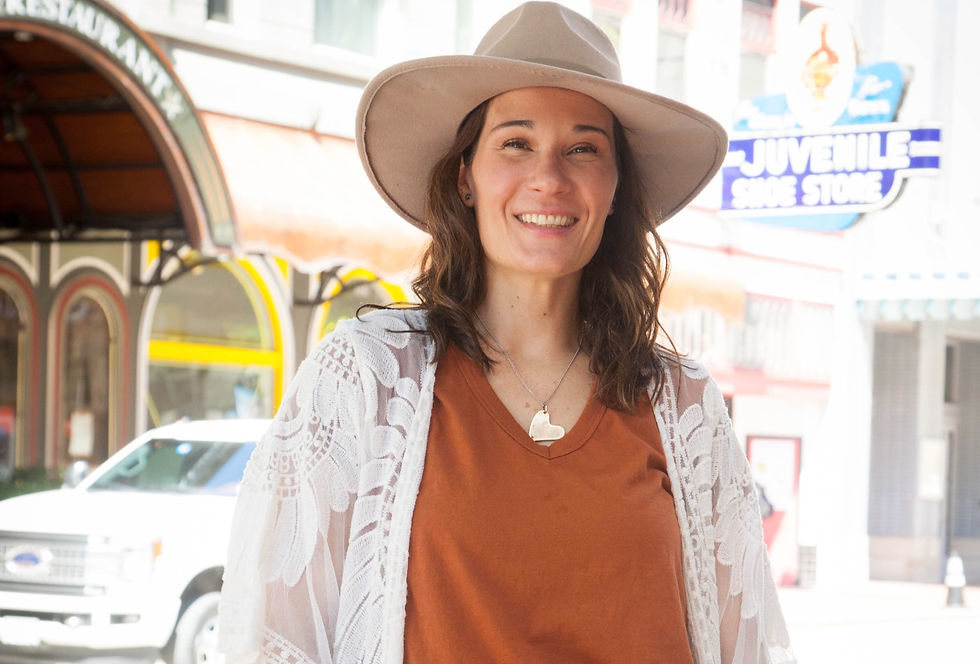Written by: Wendy J Olson, Executive Contributor
Executive Contributors at Brainz Magazine are handpicked and invited to contribute because of their knowledge and valuable insight within their area of expertise.

This month two things are happening. One most people know about. The second, most people don’t. October is breast cancer awareness month. AND it is also Domestic Violence Awareness month. Domestic violence is an issue that doesn't garner enough attention, in my opinion.
As the founder of a nonprofit that provides services for women survivors of domestic violence, I take this issue personally. As a two-time domestic abuse survivor myself, I take this issue very personally.

When I was in college, I found myself in a highly abusive and toxic relationship with a dormmate. While he never publicly put his hands on me in front of other people, the warning signs were still there. From the way he talked to me, about me to his friends, anyone paying attention should have seen that something was wrong. Some people did. And they paid the price for it.
Later in life, I found myself in a familiar situation. How had I gotten myself into this again? There’s a simple explanation for this: Unfortunately, we marry what we know.
When you’re raised in an abusive household, you gravitate towards those that are abusive. Not on purpose of course, but because it’s all you’ve ever known, and it feels familiar. Familiar here translates to safe, even though you’re anything but safe.
In October, we wear purple. We wear purple to let others know that we see them. To let the ones still living in their chaos and toxic relationships know we’re still here. And we care. So many people will ask why we don’t leave our abusers, and that’s a longer story for another day. For now, just know, that while we want to leave, we know we’re in danger, and we want to be able to get out of our circumstances, most of the time we can’t. Whether that be physical or emotional and mental, the constraints are there, and we know them well. We’ve plotted our getaway. We’ve planned and saved, and even made a play for it once. But we stayed instead. And for some, they weren’t so lucky to get away with their lives.
The gathered statistics tell us that almost one-third of women (27%) will experience intimate partner violence in their lifetime, with men matching close to that percentage at 19%. It is also believed that if that violence turns fatal in an attempt to take the victims' life, the abuser is 700 times more likely to do it again. [2]
According to Safe Haven in Tarrant County, Texas, (a United Way organization) “Domestic violence is not caused by unemployment, substance abuse, or mental illness. It is caused by power and control—one person having power over another person in a relationship and using that power to exert control over the victim.” [2]
The World Health Organization believes that “Violence against women – particularly intimate partner violence and sexual violence – is a major public health problem and a violation of women's human rights.” [3]
As a survivor of intimate partner violence myself, or IPV, I can tell you the battle for your life back is hard-fought. Years of therapy, dealing with the aftermath of having to live with severe and complex trauma, usually resulting in PTSD. You can find yourself on a road that seems to have no end in sight.
But I can say most certainly that two things changed my life: EMDR (Eye Movement Desensitization and Reprocessing) and Story Work, (An Allender Center Methodology.) While EMDR deals with the symptoms of PTSD, making daily life more manageable, story work helps you dig into the parts of your story that you didn’t even know were there. I call it, ‘digging up old roots.’ Story helps you see the reason you got to where you were in that relationship is by no fault of your own but shows you how you were set up for it in your family of origin.
I often say that the work of healing isn’t forgiving the person who harmed you. It’s forgiving yourself for the blame you put on yourself in the first place.
Follow me on Facebook, Instagram, Linkedin, and visit my website for more info!

Wendy J Olson, Executive Contributor Brainz Magazine Wendy J Olson is a healing coach, founder, and president of Grit Plus Gumption Farmstead. Wendy believes in the power of story to change and shape people's lives. She walks with women through their stories of past hurts and traumas, and guides them to find their own freedom and healing. Through Grit plus Gumption she serves survivors of sexual exploitation and domestic violence. Having applied all she teaches to her own life as a survivor herself, she is able to guide women with kindness and grace, showing them there is always more freedom to be had in one’s life. She believes everyone has a story, and even if that story is really hard, it doesn't mean the rest of the story has to be.
References:


